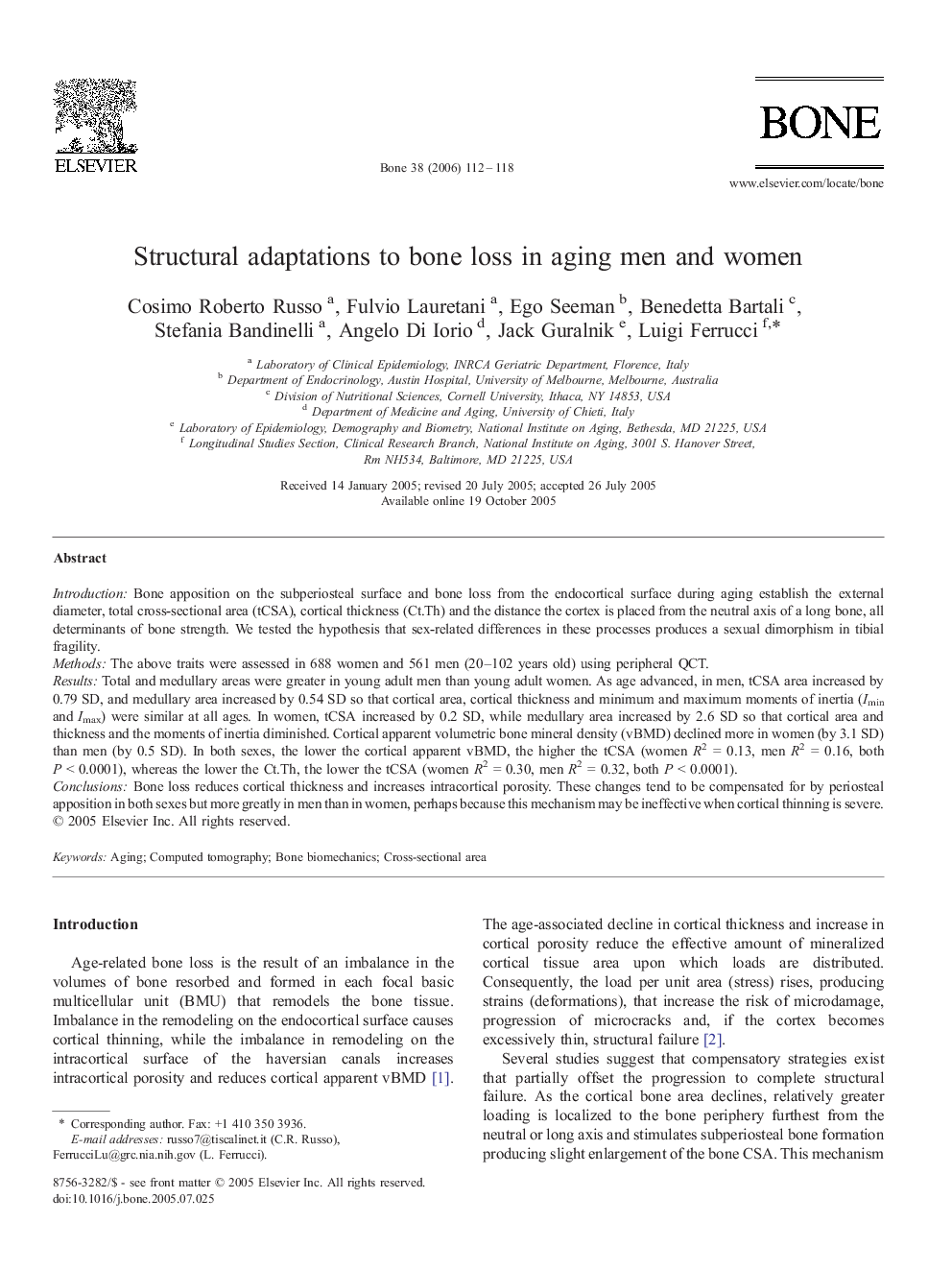| Article ID | Journal | Published Year | Pages | File Type |
|---|---|---|---|---|
| 2782751 | Bone | 2006 | 7 Pages |
IntroductionBone apposition on the subperiosteal surface and bone loss from the endocortical surface during aging establish the external diameter, total cross-sectional area (tCSA), cortical thickness (Ct.Th) and the distance the cortex is placed from the neutral axis of a long bone, all determinants of bone strength. We tested the hypothesis that sex-related differences in these processes produces a sexual dimorphism in tibial fragility.MethodsThe above traits were assessed in 688 women and 561 men (20–102 years old) using peripheral QCT.ResultsTotal and medullary areas were greater in young adult men than young adult women. As age advanced, in men, tCSA area increased by 0.79 SD, and medullary area increased by 0.54 SD so that cortical area, cortical thickness and minimum and maximum moments of inertia (Imin and Imax) were similar at all ages. In women, tCSA increased by 0.2 SD, while medullary area increased by 2.6 SD so that cortical area and thickness and the moments of inertia diminished. Cortical apparent volumetric bone mineral density (vBMD) declined more in women (by 3.1 SD) than men (by 0.5 SD). In both sexes, the lower the cortical apparent vBMD, the higher the tCSA (women R2 = 0.13, men R2 = 0.16, both P < 0.0001), whereas the lower the Ct.Th, the lower the tCSA (women R2 = 0.30, men R2 = 0.32, both P < 0.0001).ConclusionsBone loss reduces cortical thickness and increases intracortical porosity. These changes tend to be compensated for by periosteal apposition in both sexes but more greatly in men than in women, perhaps because this mechanism may be ineffective when cortical thinning is severe.
